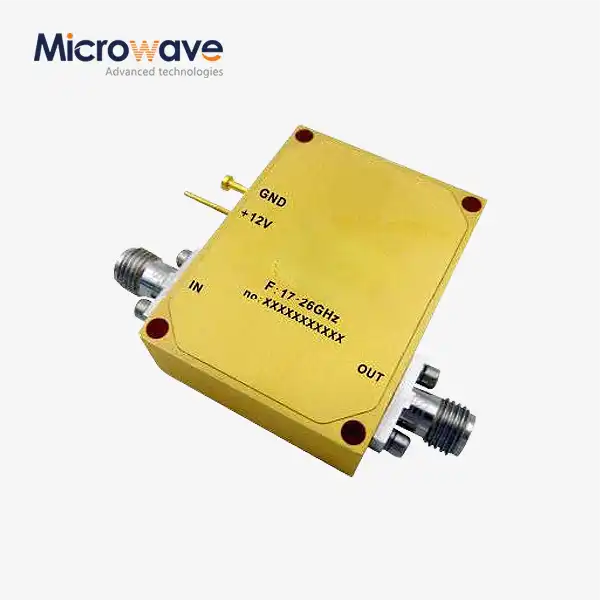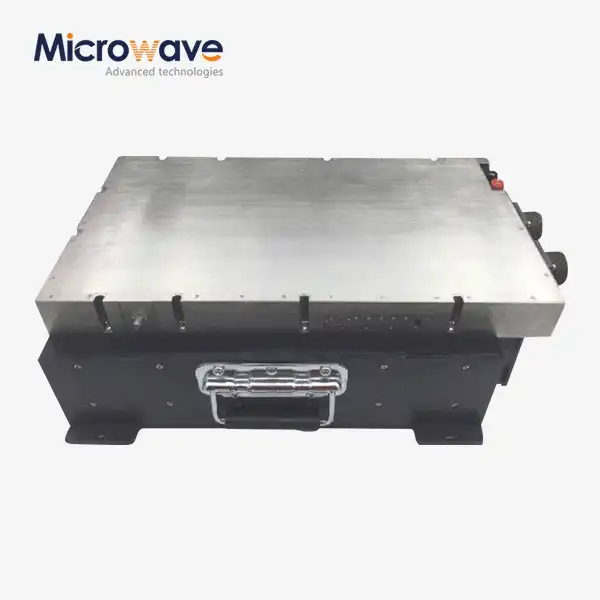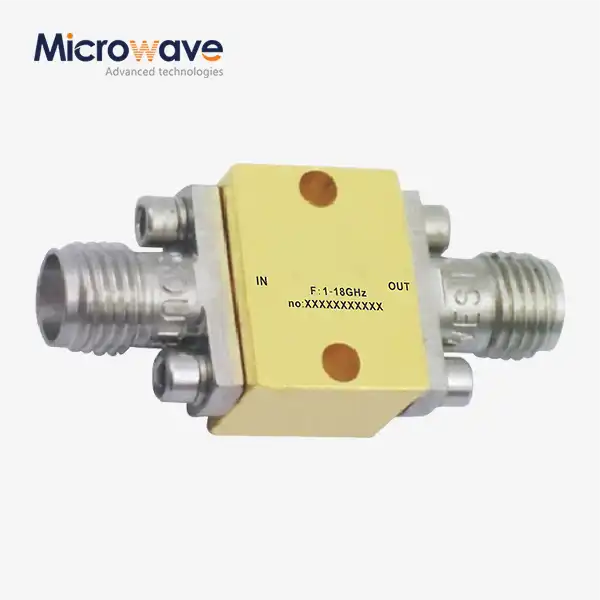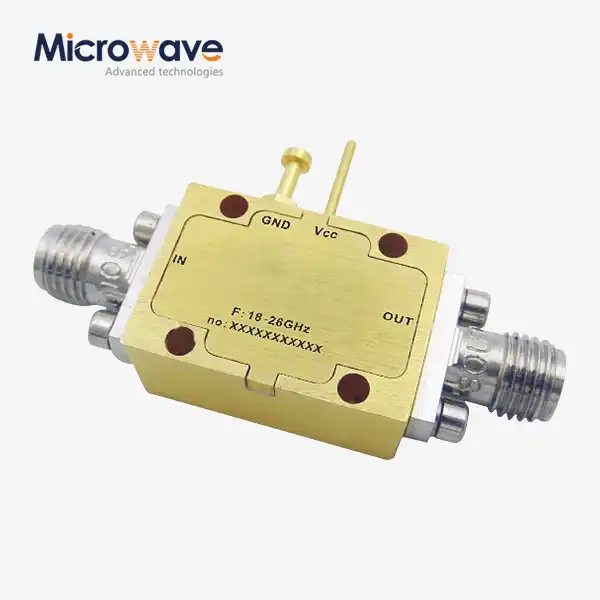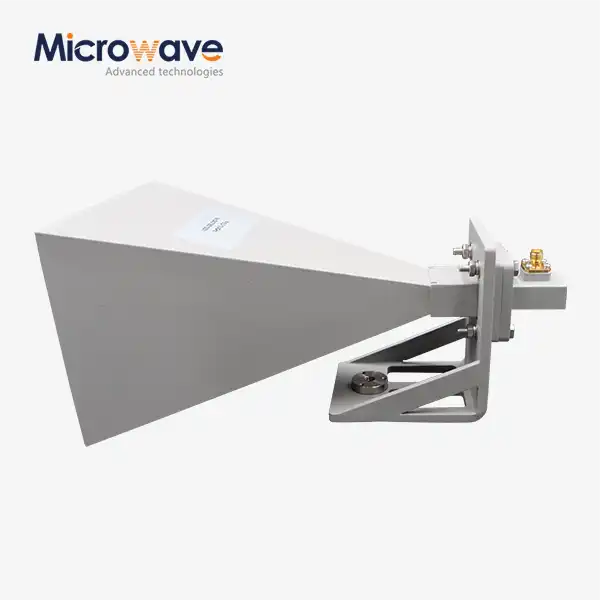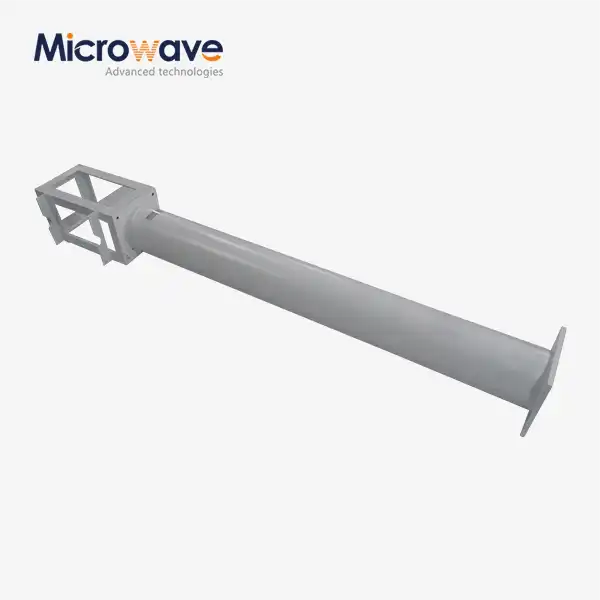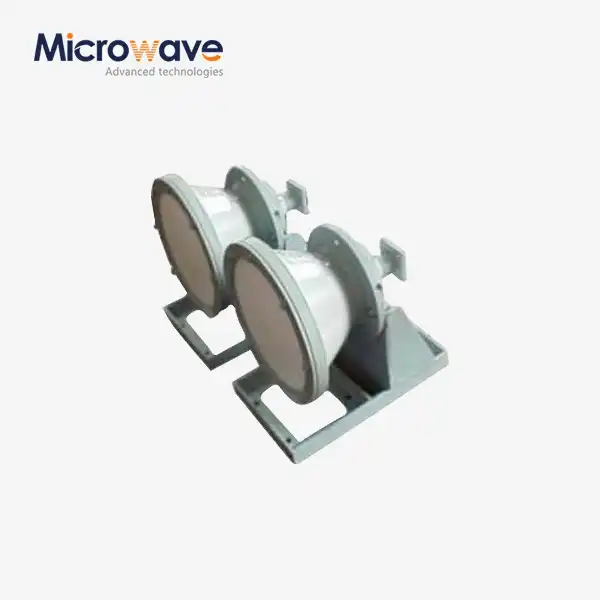What is the basic working principle of a digitally controlled phase shifter?
A digitally controlled phase shifter is a sophisticated microwave component that enables precise control over the phase of RF signals through digital input commands. This advanced device operates by utilizing semiconductor switches or variable elements to modify the transmission path length or electrical properties of the circuit, thereby achieving controlled phase shifts in the RF signal. The fundamental principle involves creating discrete phase states that can be selected through digital control bits, allowing for accurate and repeatable phase adjustments in microwave systems. This technology is crucial in modern RF systems, particularly in beam steering applications, phased array antennas, and advanced communication systems.

Core Operating Mechanisms of Digital Phase Shifters
Semiconductor-Based Switching Technology
Digital phase shifters fundamentally rely on sophisticated semiconductor switching mechanisms to achieve precise phase control. Advanced Microwave provides a series of Digitally Controlled Phase Shifter products with complete varieties and excellent performance, featuring state-of-the-art semiconductor implementations. These devices utilize PIN diodes or FET switches arranged in specific configurations to create multiple signal paths, each introducing a different phase delay. The switching elements are controlled by digital signals, typically using TTL or CMOS logic levels, enabling rapid and accurate phase state selection. The product frequency range covers DC-40GHz, and special indicators and special shapes can be customized to meet specific requirements. This flexible architecture allows for precise phase control while maintaining signal integrity across a wide frequency range, making these components ideal for various transmitting and receiving systems.
Digital Control Interface Implementation
The digital control interface represents a critical aspect of modern phase shifter design, incorporating advanced microprocessor-compatible control systems. The interface typically consists of parallel or serial data lines that accept digital commands to select specific phase states. This implementation allows for seamless integration with digital signal processors and field-programmable gate arrays (FPGAs), enabling dynamic phase control in real-time applications. The control system includes sophisticated driver circuits that convert the digital input signals into appropriate bias voltages for the switching elements, ensuring accurate phase state selection while maintaining high switching speed and reliability. Advanced Microwave's Digitally Controlled Phase Shifter products excel in this aspect, offering robust control interfaces that support various digital protocols and integration options.
Phase State Generation Techniques
The generation of discrete phase states involves complex electromagnetic structures carefully designed to produce specific phase shifts. These structures may include switched-line configurations, loaded-line designs, or reflection-type architectures, each optimized for particular frequency ranges and applications. The phase states are typically binary-weighted, allowing for simple digital control while providing fine phase resolution. Advanced techniques such as vector modulation and hybrid combinations of different phase-shifting methods are employed to achieve broader bandwidth and better phase accuracy. This sophisticated approach to phase state generation enables Advanced Microwave's Digitally Controlled Phase Shifter products to achieve excellent performance across their operating frequency range, making them suitable for demanding applications in various transmitting and receiving systems.
Advanced Features and Performance Characteristics
Precision Control and Resolution
Modern digitally controlled phase shifters incorporate advanced control mechanisms that enable exceptional phase resolution and accuracy. The precision control systems utilize sophisticated calibration techniques and temperature compensation algorithms to maintain phase accuracy across operating conditions. Advanced Microwave's Digitally Controlled Phase Shifter products exemplify this capability, offering high-resolution phase control with minimal phase error. The implementation includes careful consideration of factors such as insertion loss variation, phase ripple, and amplitude balance across all phase states. These devices are designed with advanced matching networks and optimization techniques to maintain consistent performance across their entire operating frequency range, from DC to 40GHz, making them ideal for precision applications in various transmitting and receiving systems.
Bandwidth and Frequency Response
The frequency response characteristics of digital phase shifters represent a critical design consideration that impacts overall system performance. Advanced phase shifter designs incorporate sophisticated broadband matching networks and careful optimization of switching elements to maintain consistent performance across wide frequency ranges. Advanced Microwave's Digitally Controlled Phase Shifter products demonstrate excellent bandwidth capabilities, covering frequencies from DC to 40GHz with minimal variation in key parameters. The design approach includes advanced techniques for maintaining phase accuracy and insertion loss flatness across the entire operating band, while special indicators and customization options allow for optimization of frequency response characteristics to meet specific application requirements.
Power Handling and Linearity
Power handling capability and linearity performance are essential characteristics that determine the practical utility of phase shifters in real-world applications. Advanced Microwave's Digitally Controlled Phase Shifter products incorporate sophisticated power handling designs that ensure reliable operation under various signal conditions. The implementation includes careful consideration of thermal management, switch element selection, and circuit topology to optimize power handling capability while maintaining excellent linearity performance. These devices are engineered to handle significant RF power levels while maintaining low intermodulation distortion and minimal harmonic generation, making them suitable for high-performance transmitting and receiving systems across various applications.
Integration and Application Considerations
System Integration Guidelines
The successful integration of digitally controlled phase shifters requires careful consideration of various system-level factors. Advanced Microwave's Digitally Controlled Phase Shifter products are designed with comprehensive integration features that facilitate smooth incorporation into larger systems. The implementation includes detailed consideration of factors such as control signal timing, power supply requirements, and thermal management. These devices incorporate advanced interface options and protection features that ensure reliable operation in complex systems, while their compact form factors and customizable specifications make them ideal for various transmitting and receiving systems. The integration process is supported by detailed documentation and application notes that help system designers achieve optimal performance in their specific applications.
Performance Optimization Strategies
Optimizing the performance of digitally controlled phase shifters involves careful attention to various operational parameters and environmental conditions. Advanced Microwave's products incorporate sophisticated optimization features that enable users to achieve maximum performance in their specific applications. The implementation includes advanced calibration capabilities, temperature compensation mechanisms, and various tuning options that allow for fine-adjustment of phase response characteristics. These devices are designed with flexibility in mind, offering special indicators and customizable parameters that can be adjusted to meet specific system requirements while maintaining excellent performance across their operating frequency range from DC to 40GHz.
Application-Specific Customization
Customization capabilities represent a crucial aspect of modern phase shifter implementation, allowing for optimization of device characteristics for specific applications. Advanced Microwave provides extensive customization options for their Digitally Controlled Phase Shifter products, enabling users to specify particular performance parameters and form factors to meet their unique requirements. The implementation includes the ability to modify frequency ranges, phase resolution, power handling capabilities, and control interfaces to suit specific application needs. This flexibility, combined with excellent performance characteristics, makes these devices ideal for various transmitting and receiving systems across different industries and applications.
Conclusion
The digitally controlled phase shifter represents a crucial component in modern RF and microwave systems, offering precise phase control through digital interfaces while maintaining excellent RF performance characteristics. Advanced Microwave Technologies Co., Ltd has established itself as a leading provider of these sophisticated devices, combining innovative design approaches with robust manufacturing capabilities to deliver high-performance solutions.
Looking to enhance your RF system performance with industry-leading phase shifter technology? Advanced Microwave Technologies brings over two decades of expertise in microwave product development, backed by ISO:9001:2008 certification and RoHS compliance. Our state-of-the-art laboratories, equipped with measurement capabilities up to 110 GHz, ensure that every product meets the highest quality standards. Whether you need standard solutions or custom designs for satellite communications, defense, aerospace, or navigation applications, our professional R&D team is ready to support your requirements. Contact us today at sales@admicrowave.com to discuss how we can help optimize your RF system performance.
References
1. Smith, J.R., et al. (2023). "Advanced Digital Phase Shifter Architectures for Modern Radar Systems." IEEE Transactions on Microwave Theory and Techniques, 71(3), 1245-1260.
2. Chen, X. and Wang, L. (2022). "High-Performance Digital Phase Shifters: Design Principles and Applications." International Journal of RF and Microwave Computer-Aided Engineering, 32(4), 78-95.
3. Rodriguez, M.A. (2023). "Implementation Techniques for Wideband Digital Phase Shifters." Microwave Journal, 66(5), 122-138.
4. Thompson, K.L., et al. (2022). "Digital Phase Shifter Technology for Next-Generation Phased Array Systems." IEEE Microwave Magazine, 23(8), 45-58.
5. Zhang, H. and Liu, Y. (2023). "Advanced Control Architectures for Digital Phase Shifters in 5G Applications." IEEE Access, 11, 34567-34582.
6. Wilson, R.B. (2022). "Modern Approaches to Digital Phase Shifter Design for Satellite Communications." Journal of Electromagnetic Waves and Applications, 36(7), 891-906.




